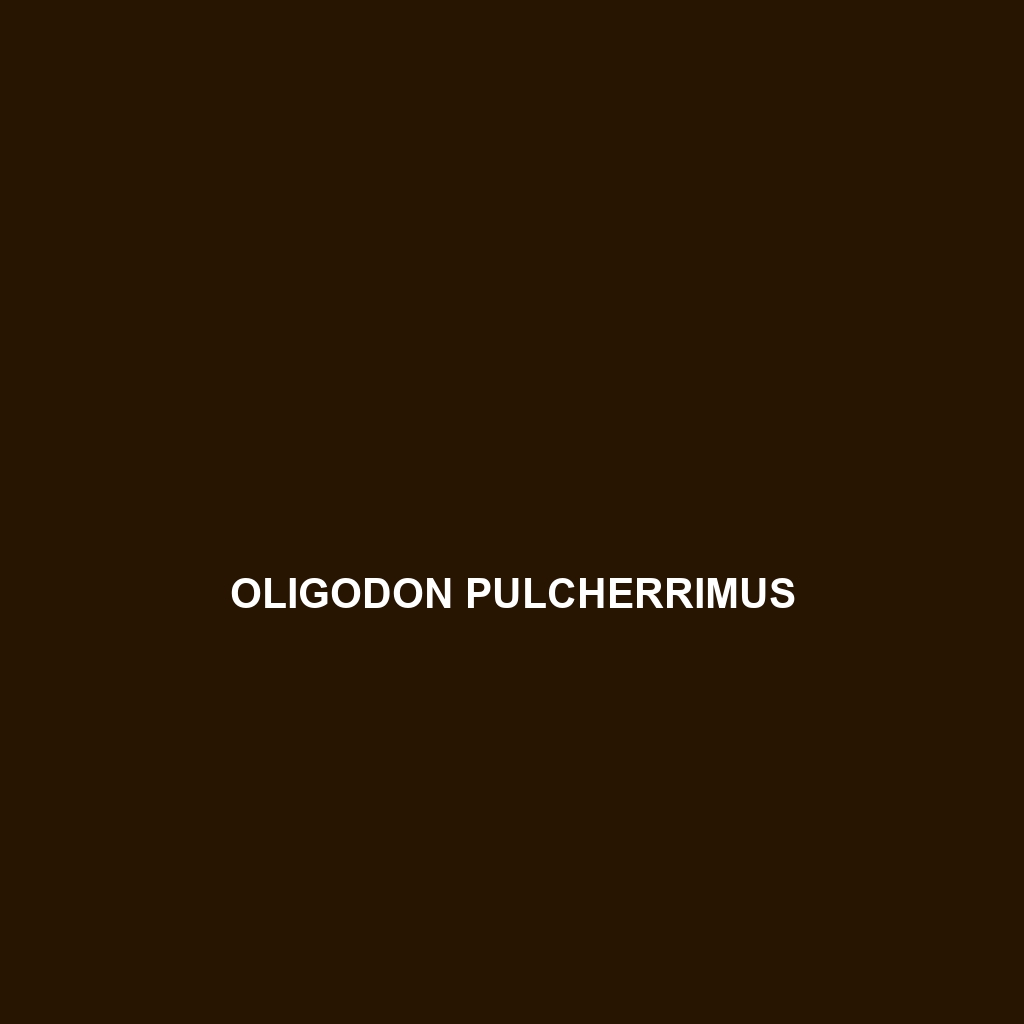Common Name
Oligodon pulcherrimus
Scientific Name
Oligodon pulcherrimus
Habitat
Oligodon pulcherrimus, commonly known as the beautiful kukri snake, is primarily found in tropical and subtropical regions of Asia, particularly in the rainforests of Southeast Asia. This species prefers environments that offer humidity and shade, making rainforests and dense underbrush ideal habitats. The snake is also observed in temperate forests and savannas, where it thrives in the moist, sheltered areas under leaf litter and logs. The climatic conditions range from warm and humid to wet, supporting a biodiversity that is essential for its survival.
Physical Characteristics
The Oligodon pulcherrimus can be identified by its slender body, typically measuring between 60 to 90 cm in length. Its head is slightly wider than its neck, which features a distinctive rounded shape. The coloration of the beautiful kukri snake is striking; it showcases a variety of hues, including rich browns, blacks, and occasionally, vibrant greens, often interspersed with bands or blotches. One of its most distinctive features is its characteristic pointed head, which aids in burrowing and maneuvering through foliage. Adult specimens tend to have a smooth, glossy appearance owing to their scales, giving them an attractive sheen.
Behavior
In terms of behavior, Oligodon pulcherrimus is predominantly nocturnal, emerging at night to hunt and explore its surroundings. The snake exhibits solitary behavior, often being found alone rather than in groups. During the day, it seeks refuge under foliage or within burrows, which helps it to escape the heat and predators. The mating rituals of the beautiful kukri snake occur during the warm months, with males engaging in display behaviors, including rhythmic movements and body posturing to attract females. These fascinating interactions are crucial for the reproduction of the species and often pique the interest of herpetologists and nature enthusiasts alike.
Diet
Oligodon pulcherrimus is an insectivore, primarily feeding on a diet consisting of insects, particularly beetles and caterpillars. It employs a unique feeding strategy that involves using its elongated, curved teeth to efficiently cut through the tough exoskeletons of its prey. Additionally, findings suggest that this species may also consume small vertebrates on occasion, adapting its diet depending on the availability of food sources in its habitat. This versatile feeding pattern helps maintain its health and vitality.
Reproduction
The reproductive cycle of Oligodon pulcherrimus typically occurs during the rainy season, which signals the onset of optimal environmental conditions for breeding. The gestation period lasts around 60 to 70 days, after which females lay clutches of approximately 6 to 12 eggs. The young snakes are independent from birth, hatching with fully formed characteristics of the adult snake. Parental care is absent, which is common among many snake species. The reproductive habits of the beautiful kukri snake are vital for sustaining its population in the wild.
Conservation Status
The conservation status of Oligodon pulcherrimus is currently listed as Least Concern on the IUCN Red List. Despite this classification, the species faces several threats, including habitat loss due to deforestation and agriculture. Conservation efforts are essential in preserving the natural habitats that support this snake. Various wildlife organizations are actively researching and promoting the importance of habitat conservation, aiming to mitigate these threats and ensure the survival of not only Oligodon pulcherrimus but also the biodiversity of Southeast Asian ecosystems.
Interesting Facts
One of the most remarkable aspects of Oligodon pulcherrimus is its unique method of defense. When threatened, it can flatten its body to mimic more dangerous species, which often deters predators. Additionally, this snake is known for its fascinating ability to camouflage within its environment, thanks to its combination of colors and patterns, allowing it to blend seamlessly into the natural surroundings. Such adaptations not only enhance its survival but also highlight the intricate relationships between species and their habitats.
Role in Ecosystem
Oligodon pulcherrimus plays a significant ecological role in its habitat. As a predator, it helps regulate insect populations, contributing to the balance of its ecosystem. By controlling these populations, it indirectly supports the health of vegetation and overall biodiversity. Furthermore, this species serves as prey for larger predators, thus forming an integral part of the food web. The presence of the beautiful kukri snake indicates a healthy ecosystem, as it thrives in environments with abundant food sources and adequate shelter.
